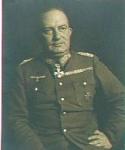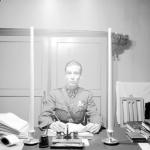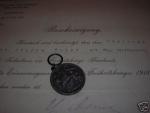-
Posts
141 -
Joined
-
Last visited
Content Type
Profiles
Forums
Blogs
Gallery
Events
Store
Everything posted by Pete A
-
An interesting point came up over at the imperial German forum. It concerned the fact that Russian officers were required to belong to the Orthodox religion. Of course, there was some loopholes. Quoting Rick Research: Now, can somebody with more knowledge give any details about this issue? When this orthodox-only thing came effective? Was it a 19th century panslavistic thing or some older decree? The thing about Poles seems logical. The uprising of 1830-31, or that of 1863-64 at least, must have made them look pretty unreliable. But did this mean that after 18XX there was no Polish-born officers in the imperial Russian army? Taken the size and population of Poland that seems quite odd. Jews were briefly discussed over that other thread, but maybe there is more information about them too? Also, there must have been officers from the asiatic parts of the empire, who were muslims. What about them? Another exception maybe? And if some protestants were allowed, then why not all of them? -- Pete Oh, almost forgot the patriotic (?) part: Some Finns? Come on, Rick.. more than 3000 officers during 1809-1917, and nearly 400 of them reached a general or admiral grade rank.
-
Let's say 1918, for starters, since that is in my main sphere of interest. It's just that I recently moved away from Helsinki, which also means away from the archives, and I don't want to pay them for the work I can do myself ("finding" the documents, copying and posting them.. that's expensive). Thus it'll have to wait until my summer vacation begins and I'll be able to visit there. And 1941-44 is under some serious planning too. 1939-1940 and especially 1944+ flow of crosses to Germans must have been pretty dry Even though, I know that at least Wolfgang von Hessen-Kassel (or "the crown prince of Finland") and Kurt Kuhlmey got their crosses in 1990's, but I think those were offically presented reissues for lost (or never issued) war-time ones. Pete
-
Nice one. I've never seen this 1st class recipient before. But then again, there was a lot of these weird foreign ministry and post-war instructor / general staff -type of guys who got it, most of them just because it was polite to give them something shiny. And then there were guys who actually did something for one, but it can be disputed if the class they got was really an appropriate one. Like GdI Friedrich Karmann here (picture shamelessly ripped off from another forum): [attachmentid=38629] See, that is a first class hanging around his neck. And it is a 1918 one, since he died in september '39. But in 1918 he was only a captain. Ia of Ostseedivision during the war, for sure, but still only a captain. Not a very likely recipient for a first class decoration, which at the time was practically the highest one that a German soldier could receive. Them being lazy can also be a good thing.. Soon, Mr. Research.. soon.. it won'be long now Pete
-
Also, would it be order of St. George (white enamel) or "soldier's cross" of St. George (silver / gold, like in Igor's wonderful link)?
-

Imperial Russia The Last Stand of Imperial Russia... White Forces Flag
Pete A replied to NavyFCO's topic in Russia: Imperial
Black, orangish-yellow, and white were the colors of the Romanov Family. That combination was also used in the ribbons for the 1913 Romanov Tercentenary medal and the medal for suppression of Polish Rebellion of 1863-64. Pete -

Finland Finnish Awards To Germans In WW1
Pete A replied to Stogieman's topic in Northern European & Baltic States
Generally, yes. But seems like it was case sensitive. I know many Finnish senior NCOs who got CoL4 in 1918, so why not Germans too. From WW2 I know examples where corporals (!) got CoL4 with oakleaf, but I quess that was as far as it went with other ranks. A neat bar by the way, Stefan! Pete -

Finland Finnish Awards To Germans In WW1
Pete A replied to Stogieman's topic in Northern European & Baltic States
How about a senior NCO with CoL4? Pete -

Soviet A Different Kind of Soviet Ace
Pete A replied to slava1stclass's topic in USSR: Soviet Orders, Medals & Decorations
Naah, now you made it too easy. Is it the Great Bustard? http://www.greatbustard.com/greatbustardframes.htm Pete -
Actually, I think these cups are the most common encountered Romanov memorabilia around, and seem to be popping up every once in a while. The brand new Monety i Medali catalog lists an apparenty authentic one for an estimate of $ 500-700. However, that example seems to be in top condition. (I hope the auction house hasn't permanently switched into this "thumbnails only" mode, since their online catalogues used to be one of the best picture references of imperial Russian stuff ) Pete
-
Nice bars, and nice to see this stuff appearing from across the pond too! The Civil Guards (Suojeluskunta, SK) Merit Cross came in three classes, gold, silver and iron. The medal was single class. Only a handful of golden ones was awarded, for Marshall Mannerheim, presidents Svinhufvud, Kallio and Ryti, and naturally the commander of SK, GL Lauri Malmberg. Silver ones were these sort of an 'lounge lizard' awards that were given to those who had donated money or otherwise contributed to the Civil Guards organization or simply had a status high and visible enough. The iron ones on the other hand, were the actual awards for long and meritous service in the organization, or even for heroic deeds performed during the wartime. Yellow-red (civil) ribbon w/ swords combination on crosses of liberty is also used to denote awards given for military merits during the peacetime. Here's a neat wartime picture of a military chaplain wearing that rare combination. (source: Pohjois-Pohjanmaan Museo, Uuno Laukan Kuva-Arkisto) [attachmentid=34568] Pete
-
I remember one these being sold at this quite well-known imperial militaria site couple of years ago. It was described as some sort of an commemorative badge for those who had been in the air service before the war, and then returned to their original units (infantry, cavalry etc.) when the army was mobilized. But this is just a fantasy badge then? Although it wouldn't surprise me. Pete
-
Unfortunately not. That picture above is the only concrete thing I got. Now, seeing that it actually was part of a bigger group, I feel sorry that I didn't take any better notes. Oh, I was in Stockholm during the last weekend, but now it seems I should have picked this one.. yet another missed opportunity. -- Rick, That probably is true, but given his apparently close relations with Finland (the two (!!) red cross medals), he might as well received his Helsinki-medal during the actual anniversary-celebrations. Some 30 former "Finnlandk?mpfer" had arrived from Germany, amongst them were general von der Goltz and admiral Meurer. Also 48 German veterans living in Finland were attending. The matrikel-number in his document (3023) might help to date his medal accurately. There are also other interesting things: His german CoL3 document refers him as being part of 1. Radfahr-Kompanie / 2. J?ger-Bataillon, his first 1918 commemorative medal document as part of 11. Radfahr-Kompanie, and other as part of Bay. Feldlazarett (nr. 23 presumably). Also, the clasps in his commeorative medal (Viipuri & Tampere) are odd, since none of the above mentioned units wasn't of course even near those cities during the war. This is a very interesting group, and too bad it has been broken up. I guess there should be some red cross documents floating around too. Pete
-
Well, well.. Ages ago I was the eBay underbidder on this one, but I did save the picture. It is yet another 1918 commemorative medal document for Dr. Euler. Since it doesn't seem to be yours either, looks like the group is at least in three parts? Unfortunately I can't remember to whom this went for. En mycket trevlig grupp, Stefan! Gratulationer! Pete [attachmentid=32620]
-
Now that I'm thinking it might have been that if you got the St. Andrew, you were entitled to Alex and Anne too. But this is all straight from the memory, so maybe we'll wait until some actual sources are cited. I quess this arrangement was effective only until the whole award system was re-organized so that one started getting awards for reaching a certain rank and age of service etc. I think this happened in early 19th century? I also seem to recall that if someone received the Prussian Balck Eagle order, he was also entitled to the grand cross of the Red Eagle? Pete
-
David, I seem to recall that at least in the late 18th century and early 19th century the order of St. Alexander Nevsky meant also automatical St. Anne. But maybe someone with all the right books has more accurate information? And btw, St. Vladimir ranked higher than St. Alexander Nevsky. Pete
-

Imperial Russia Neat Imperial Russian - White Russian Group
Pete A replied to NavyFCO's topic in Russia: Imperial
Since I see no stars there, it indeed looks like the boards are those of a full general. But I'd assume that if one had reached such a high position, he would have also been appointed as a general-adjutant, but like you said, there is no cypher. Also, the fact that he is wearing 3rd class St. Vladimir with no swords (no star visible, right?) as his "highest" order (besides the St. George, of course) seems odd. Pete -

Finland Finnish Awards To Germans In WW1
Pete A replied to Stogieman's topic in Northern European & Baltic States
That has to be a 3rd class. And even that was "bumbed up", given his rank and duty. Since he probably didn't receive anything more than a piece of MoL2 ribbon on 7th of may, that might have led in to a mix-up. Pete -

Finland Finnish Awards To Germans In WW1
Pete A replied to Stogieman's topic in Northern European & Baltic States
Jani: Nice bars! And it's nice to have someone here who actually knows something about Finnish awards, so welcome! Rick: I know that at least one naval aviation officer, Leutnant zur See Droege took part of the ?land-expedition. No idea though, if he got a CoL or not. The site of "Institut Deutsche Adelsforschung" shows three navy Droeges during 1914/18: Droege, Gerhard, Seekadett Droege, Heinrich, Leutnant zur See Droege, Rudolf, Leutnant zur See Also, in addition to those R?gen-guys, there likely was some naval aviators in the Finnish Air Force. I have some names back home that aren't yet listed in the "other" Finnish thread. I'll see if any of them is a navy guy. Pete -
Very nice group, Paul! Finnish-German stuff always seems to avoid me, no matter how much I'd like own something like this. But then again, also money seems to avoid me, so maybe that's just fitting. Of value I can't say nothing, but I guess that everything related to Germans in Finland in 1918 can be considered rare. Those Medal of Liberty docs were made especially for Germans (well, naturally, since they are in german.. ) The finns who got medals, didn't receive any documents with them, only with crosses. Yours is Signed by R?diger von der Goltz and it's one of those medals which were issued right before Germans left the country. The other "Finnish" document is for the 1918 commemorative medal. And even though, like Ulsterman told, it says War Ministry, it's actually signed by head of department in the "president's war council", major Yrj? Aarne. I'll try to dig up a short bio of him if you want? The secretary-lieutenants signature is too difficult for me to read, but if someone makes up something out of it, I'll see if there's anything of him too. Pete
-

Imperial Russia Miniature of Field Marshall Ivan Paskevich
Pete A replied to Ramblinfarms's topic in Russia: Imperial
The lower star and that big white cross are the order of St. George 2nd class, and the upper star could be order of St. Alexander Nevsky. Other crosses are unfortunately too vaguely done for me to identify. The uppermost cross might be the Russian version of the order of Malta? I'm not quite sure though, that this portrait is of FM Paskevich. By searching Ivan Paskevich or Иван Фёдорович Паскевич in google brings up many sites where pictures of him can be seen, and by comparing them to this one, I really don't see a match. But since he is a Russian Napoleonic (EK1) veteran with St. George 2, he should be identifiable. Maybe others can tell you more. Pete -- edit: from http://george-orden.nm.ru/Mars/mars48.html you can find a good bio of Paskevich. It is in Russian, but at least babelfish worked fine for me. -
No problem. Some 13 000 Germans served in Finland during 1918, but not all of them got awards, some of them not even the 1918 commemorative. For more information, see threads "Finnish Awards to Germans in WW1" and "German troops in Finland 1918". Pete




